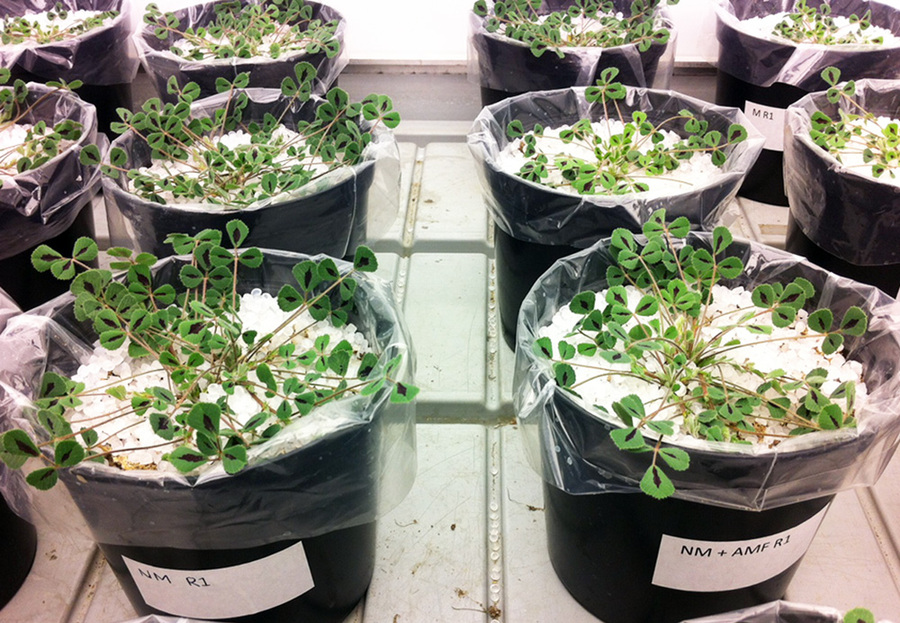Researchers studying mycorrhizal fungi don’t generally use natural field soils in their experiments. Instead, they use sterilised soil that has been inoculated with mycorrhizal fungi to minimise contaminants and other variables.
New research published in the ISME Journal suggests that such experiments might not accurately represent what happens in a field situation.
Working with collaborators in Denmark, co-first author Dr Stephanie Watts-Williams (Ramsay Fellow with the University of Adelaide School of Agriculture Food and Wine and the ARC Centre of Excellence in Plant Energy Biology) says the research showed for the first time that there is natural suppression of mycorrhizal fungi in soils.
"There is a microbial component of field soils which suppresses the ability of mycorrhizal fungi to transport phosphate from the soil into the plant. Furthermore, this suppressive effect in field soils is more apparent in some soils than others," Stephanie said.
"In a preliminary study, we found evidence that the functions of mycorrhizal fungi are suppressed in natural soils. We then carried out more experiments to determine what might be the cause of the suppression – is it a biological or physical component of the soil, or both?"
By using radioactive phosphorus (P) labelled soil to trace the uptake of P by mycorrhizal fungi into Medicago truncatula plants (an important pasture legume in Australia), the study measured the function of mycorrhizal fungi to see whether it was affected by different soils.
They found less P was taken up by fungi in a local field soil than in sterilised soil, then tested another 21 soils from across Scandinavia to see how common mycorrhizal suppression is in natural soils, with highly variable results.
Further investigation through altering abiotic features of the soils and DNA sequencing led the researchers to conclude that pH indirectly affects suppression of mycorrhizal fungi through altering the microbiome of the soil. Studies are continuing to identify the exact soil microbes involved.
"This finding has effects in two different contexts: For scientists studying mycorrhizal fungi, it means that using sterilised soil inoculated with mycorrhizal fungi in our experiments is unlikely to be representative of what is going on in the field, so we should be working harder to make our experimental soils more realistic or conduct more field trials," Stephanie said.
"For farmers, it means that their soils may be suppressing the ability of mycorrhizal fungi to help their crops acquire nutrients, and the extent of suppression is likely different from farm to farm. The key now is to identify the precise microorganism/s that are behind this suppressive effect, so that we can eventually test field soils for how suppressive they are to inform farmers and management practices."
"Ultimately, if management of mycorrhizal fungi in agricultural systems can be better understood and improved, the benefit is that we can reduce the use of fertilisers."

